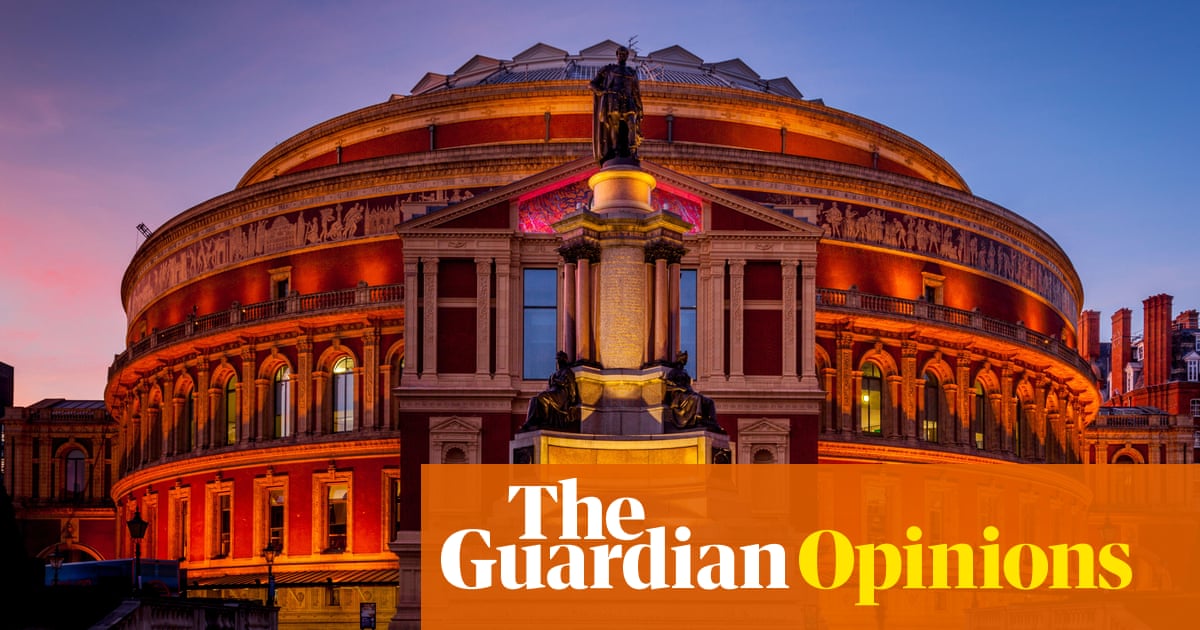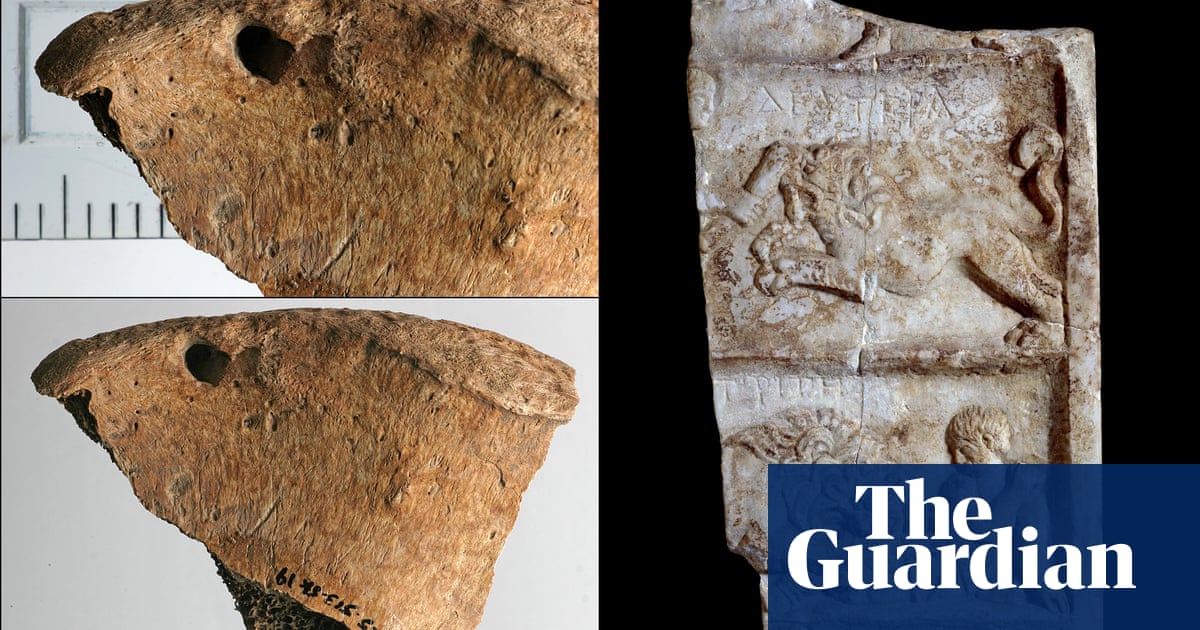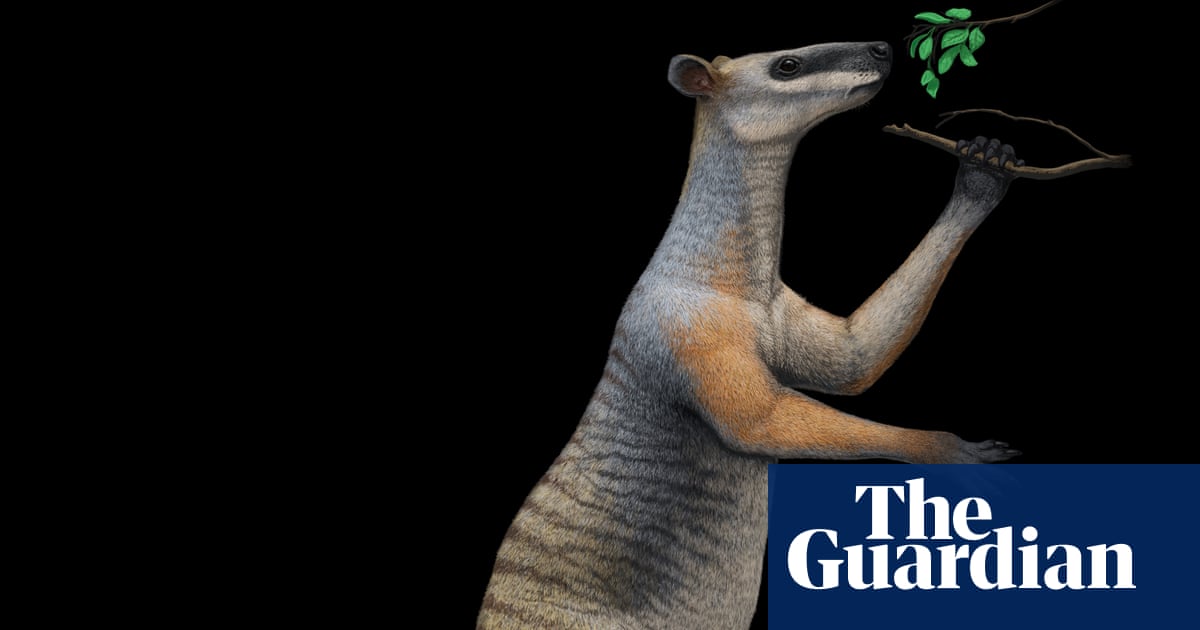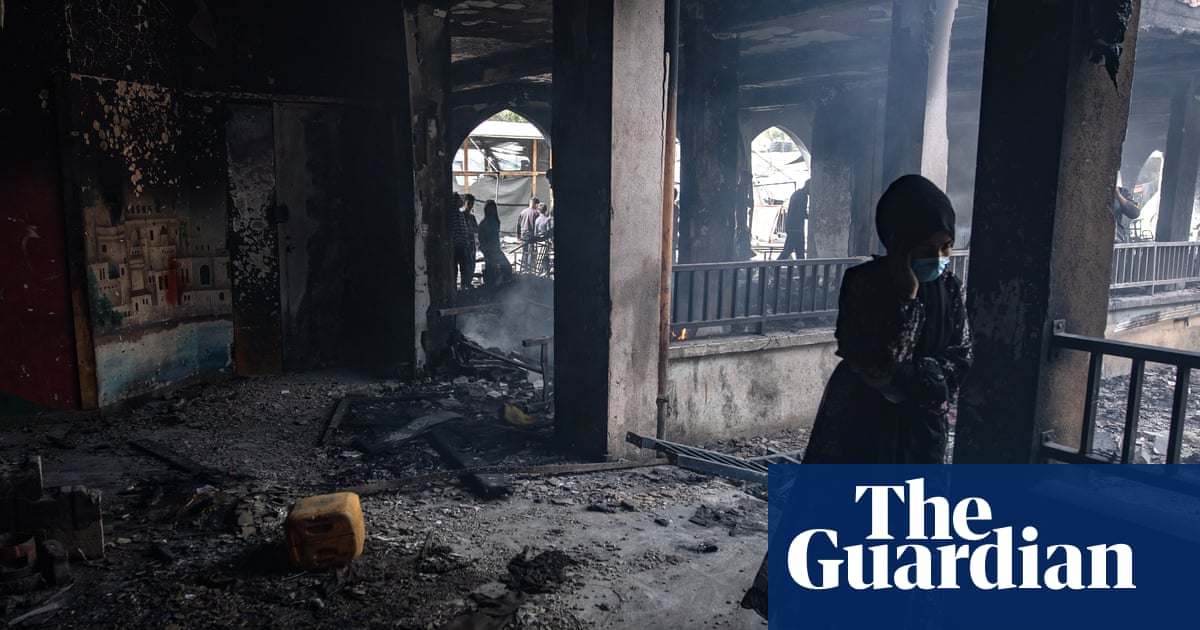A kid is being spanked across his mother’s lap, his face all scream and indignation. She’s blowing out her cheek with the effort and the wallpaper stripes march by as regular as her slaps. She’s looking out at us from the picture and her one hand raised could almost be waving hello. Everything is rendered plain as a picture book, with flat, coloured-in outlines and not much modelling. The longer I look, the stranger Noah Davis’s Bad Boy For Life feels.
The artist was 24 when he painted it. He’d already been painting seriously since his teens in Seattle. A year later he painted The Architect, in which the eponymous figure sits on the far side of a model of some grandiose architectural scheme, which looks like a pile of bricks set on a ziggurat. Based on a photograph of celebrated Black architect Paul Revere Williams, the work has him leaning forward, as if explaining his model to a client, but his head is veiled by swipes and drools of white on the painting’s surface, which dribble down over the model. There’s something cartoonish, like an exploded “thinks …” bubble, in the air between us and the architect, his thoughts and explanations spattering the air.

That unsettling strangeness never left Davis’s work. He was enormously prolific. In a career that was all too brief, sometimes you think he’d just got going when he died of a rare form of soft tissue cancer at 32. Davis left more than 400 paintings and a slew of curatorial projects, exhibition plans and unrealised ideas. What he was really good at was the telling, fundamentally mysterious image. A man rides a unicorn, instead of a mule, across the blank black terrain of those 40 acres of land freed Black slaves were promised but never got. In the gloom of early evening, an ensemble of ballerinas dance in the open spaces between the buildings in an LA housing project, and an orchestral conductor stands on a chair in the gloom, conducting nothing.
Whether he was painting a man walking to work, people waiting for the lights at a crossing or a Black girl wearing a white Halloween mask sitting on her bed in a room with a lurid red wall, Davis imbued everything with a kind of painted-ness that redirects us into a labyrinth. Full of humour and observation, social commentary, and innumerable cultural and autobiographical references – from the ritual bear pit humiliations of reality TV shows to Egyptian mythology, from the novels of Richard Brautigan to a scene borrowed from Hitchcock – Davis’s work is full of jump-cuts and diversions.
Shuttling between figuration and high abstraction – snatches of Mondrian, Fellini-esque fantasies played out amid poor housing and trashed yards – even the simplest of Davis’s paintings are brimming with ideas. The details snag you. A girl whose long white socks have been painted in a thick impasto of patterings and daubs reminds me of early Robert Ryman. The walls behind the guy on the sidewalk are softened, thinned-down humming rectangles, reminiscent of mid-period Rothko. There are echoes everywhere.

Davis looked to painters of an earlier generation while finding his own voice. Marlene Dumas, Luc Tuymans and Peter Doig were significant in the mix of his developing art. Television and movie stills, found photographs and art history, have played significant roles in the work of all of them, Davis included. Nothing comes out of nothing, and Davis was clearly voracious, and more than a fanboy. His paintings are unmistakably his own.

Davis also responded to the particular moment. During the campaign leading up to Barack Obama’s first presidential win in 2008, Davis adopted a mandarin modernist pose, painting flat, quasi-geometric shapes floating on bare linen backgrounds, the forms all taken from the shapes of battleground swing states (Nevada, Colorado and New Mexico) during the previous presidential race in 2004, the peachy purple colour of the forms a mix of Democratic red and Republican blue. Only one of these paintings survive (he painted over the canvases of two of them), and it hangs in a bay in the Barbican’s upper gallery. Bright rectangles of light projected on the adjacent walls signal the missing paintings. This, I think, is a curatorial misstep in an exhibition that is already complicated by its desire to show the breadth of Davis’s work, including his curatorial projects and source material.
Another single painting occupies a different bay, hanging against midnight blue walls. The reference here is much more personal. It is night. A man stands in a cleft in the rocks, a kerosene lamp dangling from his hand. He’s on the verge of something, looking out into a night spangled with stars. Painting for My Dad (2011) was made while Davis’s father was dying from cancer.

A year later, with money from his father, Davis and his wife Karon, a sculptor and performer, founded the Underground Museum, a storefront space in Los Angeles’s Arlington Heights district. Davis painted and showed his work here, and hung out, often with his elder brother, filmmaker Kahlil Joseph, with whom he had previously worked on a spoof of highflown art magazine October, which they called Feb Mag.
Joseph showed his acclaimed double screen music video with Kendrick Lamar, Good kid m.A.A.d. city at the Underground Museum in 2014. Wanting to bring culture to the predominantlyBlack and Latinx neighbourhood, Davis lobbied museums to lend artworks to the space and was met with a resounding refusal. In 2013 he decided to improvise, and remade works “in imitation” of things he wanted to borrow. He used standard strip lights in imitation of Dan Flavin, a regular bottle rack stood-in for a Marcel Duchamp readymade, and a Hoover vacuum cleaner (bought on eBay) placed in a fluorescent-lit vitrine emulated a work by Jeff Koons.
There was a fake Robert Smithson (using sand and mirrors from a hardware store) and his own version of an On Karawa date painting. The show was called Imitation of Wealth, and has been faithfully – or perhaps unfaithfully – recreated at the Barbican. Already ill, Davis met Helen Molesworth, the then-chief curator of the LA Museum of Contemporary Art, who championed his mission to borrow and show works from the museum’s collection, and his first project (Davis devised 18, but the Underground Museum foundered after his death) was a showing of white South African artist William Kentridge’s 2003 Journey to the Moon, a film combining live action and animation, the everyday and the fantastical. This too is given a space of its own at the Barbican.

Davis’s current retrospective covers a mere eight years, the last works made during the final months of the artist’s life. A large group of photo-collages, with snatches of paint, were made from his hospital bed (he made 70 during his stay), and he went on to make a number of large paintings in his final months, including one depicting a funeral, another of an intimate domestic scene with a pair of young Black women on a couch, and a seated male figure cropped by the painting’s edge. We only see his trousers and sneakers, and something like a blanket over his knees. Like the veil in front of The Architect’s face, the white paint dribbles over the surface. The figure is on the way out, incomplete.
It is impossible to look at Davis’s work without the intrusion of his early death. Inevitably, it gives this exhibition, which has travelled from Potsdam to London, before a final showing at the Hammer Museum in Los Angeles, a sense of poignancy. Davis is forever a young artist on his way, caught up in the middle of things, when everything seemed possible.

.png) 2 months ago
26
2 months ago
26













































